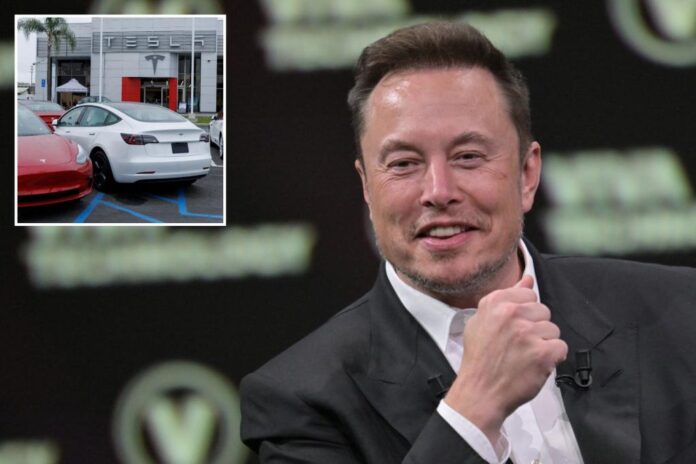Tesla on Wednesday handily beat quarterly profit estimates and reported automotive gross margin in line with Wall Street expectations, signaling it was gaining ground in the electric-vehicle price war ignited by CEO Elon Musk.
Under pressure from increasing competition and an uncertain economy, Tesla has slashed prices several times in the US, China and other markets since late last year, and increased discounts and other incentives to reduce inventory.
This has pressured its industry-leading automotive gross margin, a closely watched indicator of the company’s financial health, but Musk has said Tesla would sacrifice margins to drive volume growth.
For instance, Tesla this year cut prices of its Model Y long-range version by a quarter to $50,490.
Tesla said in a statement on Wednesday it was focusing on reducing costs and on new product development, and that the “challenges of these uncertain times are not over.”
Automotive gross margin, excluding regulatory credits, fell to 18.1% in the second quarter from 19% in the first quarter, according to Reuters’ calculation. A year earlier it was 26%.

Tesla reported overall gross margin of 18.2% for the April-June period – the lowest in 16 quarters – compared with 19.3% for the first quarter.
“Multiple rounds of aggressive price cuts has put Tesla in a position of strength after building its EV castle and now is set to further monetize its success,” Wedbush analysts said in a note.
Shares of the Austin, Texas-based automaker were flat after the bell, following volatile trading just after the results were announced.
The company on Wednesday reiterated that it expects to achieve deliveries of around 1.8 million vehicles this year. The automaker had predicted in October it would sell every car it manufactured in the foreseeable future but in the second quarter it produced 13,560 more vehicles than it delivered. That number, though, was narrower than first-quarter figures.
Recently, a lack of new models has made it tougher for Tesla to take on rivals in China, where glitzier offerings from local players have weighed on demand.
Lower pricing, along with government tax breaks for EV buyers in the United States and elsewhere, drove Tesla’s deliveries to a record 466,000 vehicles in the April-July period globally, but ate in to its profitability.
Still, on an adjusted basis, Tesla earned 91 cents per share. Analysts had expected a profit of 82 cents per share, according to Refinitiv.
The company reported revenue in the April-June period of $24.93 billion, compared with estimates of $24.48 billion, according to Refinitiv data.

Higher costs
Tesla’s stock received a big boost this year after Ford Motor, General Motors and a raft of other automakers and EV charging firms said they would adopt Tesla’s charging technology.
The company’s stock has risen 60% since the first such deal with Ford on May 25. So far this year it is up 138%, helped also by expanded federal credits for Model 3s and investor excitement over artificial intelligence.
The company said on Wednesday that lower raw-material costs and government tax credits helped reduce cost-per-vehicle but that it saw an increase in operating expenses driven by Cybertruck, AI projects, as well as the production ramp of 4680 battery cells that are key to making cheaper and compelling EVs.
Tesla said production of the long-delayed electric pickup Cybertruck remained on track for initial deliveries this year.
Musk introduced the pickup truck at a 2019 event but has pushed back production timing since then. Last year he cited shortages in sourcing components as the reason for delaying the Cybertruck launch into 2023.
Tesla said on Wednesday, “we have made notable progress on yield improvement of our 4680 cell production lines,” but did not elaborate on the yield and production volume.
In 2020, Musk unveiled a plan to produce Tesla’s own EV batteries called “4680” cells. But the carmaker has struggled to meet Musk’s targets for production and performance of the cells.



